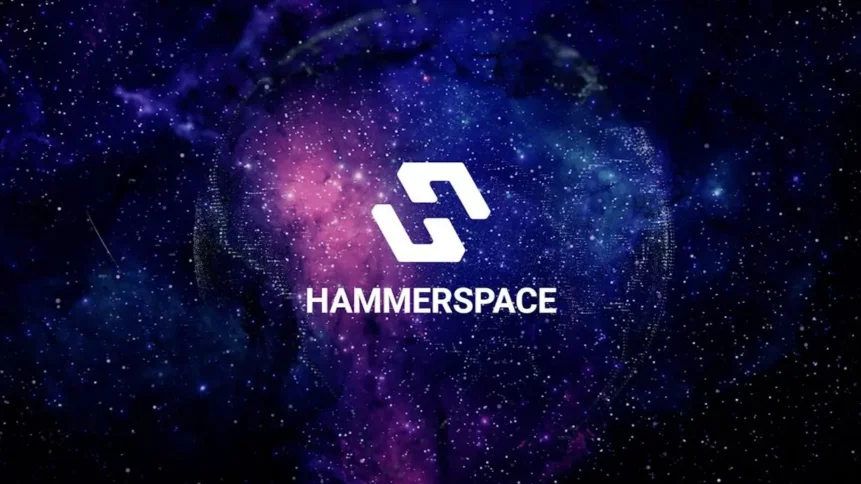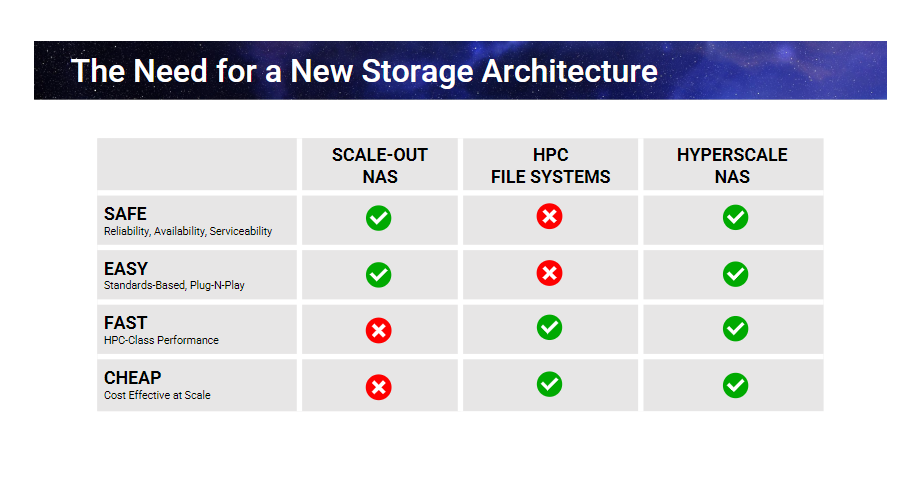
• Data storage solutions underpin the forward-going technologies like generative AI and machine learning.
• That means there’s a need for cleverer, more streamlined and ecological data storage.
• Hammerspace is making its HPC parallel file system available as an NAS.
Hammerspace is the instantly accessible storage area in fiction, the imaginary extra dimension that hammers, say, appear from when Tom needs to set a trap for Jerry. It’s also the name of the US-based data storage company on a mission to change how people use their data.

It’s Hammer time!
Data is always in motion and, much like an anvil pulled from behind the back just in time, should be accessible as-and-when needed. Unlike its eponymous cartoon concept though, Hammerspace the company doesn’t require you to suspend your disbelief.
Welcoming Brian Pawlowski (who you might know from his work at Quantum) as VP of performance engineering, late last week Hammerspace announced the availability of its HPC parallel file system as an enterprise NAS for the first time.
A response to the need for a new storage architecture in an increasingly data-driven world, Hammerspace answers to the demands of the next data cycle.
Clear gaps are emerging in the way data is being used: the storage of unstructured data for deep learning sees silos form and it becomes difficult to access and unify data sources; the high performance demands necessary to keep GPUs utilized aren’t met by existing NAS, which isn’t designed for large compute performance.

From Hammerspace.
We all know that AI and ML are generating waves that wash upon every industry, but when it comes to data, the implications are particularly huge: there isn’t AI without data, and the emerging industry’s demands are forcing a reckoning on data storage methods.
Hammerspace is simplifying data pipelines for these new technologies by aggregating data into a single file system that’s globally accessible. It’s also directly enabling the future of AI, which demands performance rates not met by legacy NAS architectures.
Hyperscale NAS architecture speeds time-to-market and time-to-insight. Read the technical brief from Hammerspace here.
“We have traditionally separated scale-out file systems, commonly known as parallel file systems, from NAS precisely due to the nature of their performance for very large HPC/ AI environments. As we enter into this next generation of AI, new technologies, particularly in data infrastructure, are needed,” said Camberley Bates, VP and practice lead at The Futurum Group.
Available globally and a world first, the Hammerspace data environment includes two broad sets of capabilities – hyperscale NAS and data orchestration. Available as a standard capability of the Hammerspace Global Data Environment and included in the cost of Hammerspace software licensing, the new offering answers to most data storage demands.
Data storage sustainability
While not every change in data storage systems directly pertains to sustainability, the data storage industry cannot be separated from its ecological implications.
Enabling the proliferation of AI by extension means increasing the strain on a climate emergency that’s already the realization of worst-case scenarios. The secrecy that surrounds data centers is one indicator – though, of course, security is also a factor in this – that best practice doesn’t always include the environmental angle.
Proving a cut above the rest must now mean proving a commitment to green initiatives. Hammerspace works to connect users with their data on any vendor’s data center storage or public cloud services so that their customers don’t have to compromise on the solution that they choose – a solution that should center environmental best practice.
Hammerspace has also expanded its third-party storage support to include tape storage, a method that supports ESG initiatives by reducing energy consumption and carbon footprint, but now doesn’t mean lengthier processing.








